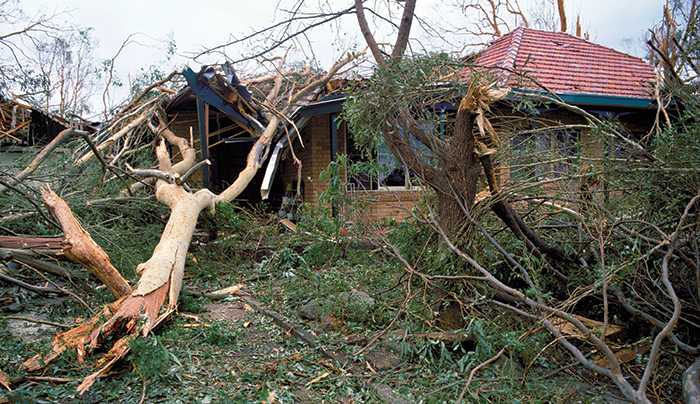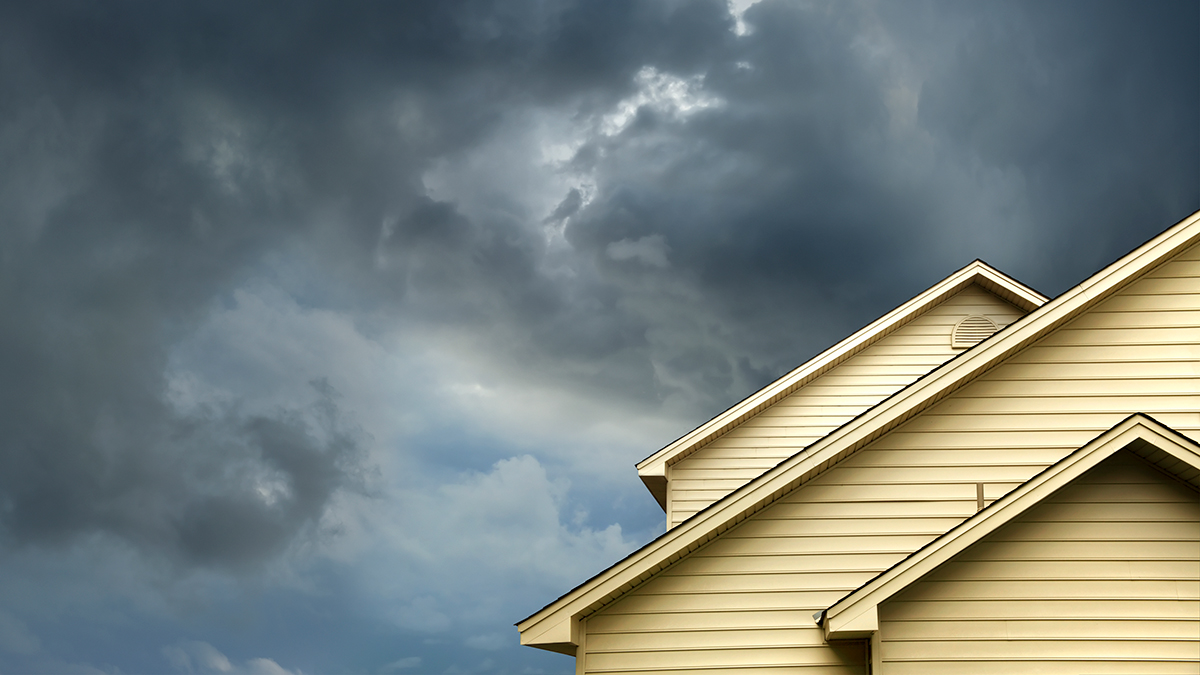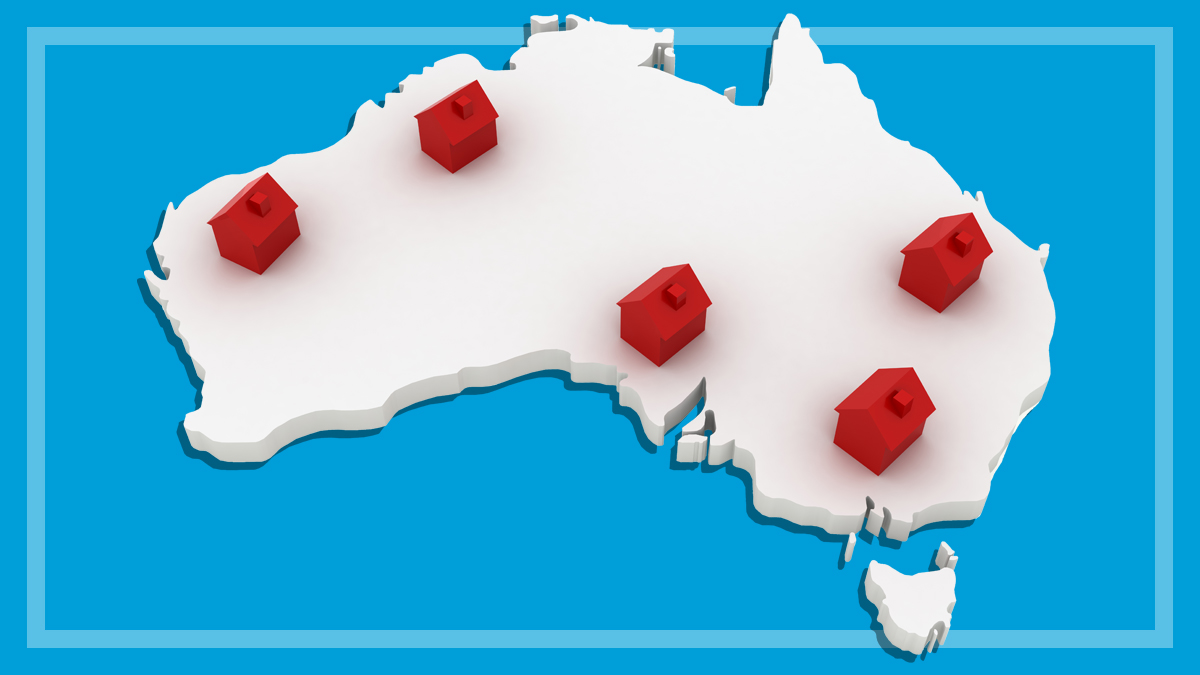Get our independent lab tests, expert reviews and honest advice.
Insurers take no responsibility for inaccurate rebuilding quotes

Need to know
- Most of the 'sum insured' calculators that insurers offer to prospective or returning customers are based on the Cordell Sum Sure calculator, but insurers often customise it
- We tested insurer calculators with four genuine addresses around Australia, and rebuilding estimates varied widely
- The Australian Financial Complaints Authority recently ruled that an insurer won't be held responsible, after its calculator gave rebuilding estimates that proved too low
When Rod’s home insurance renewal letter arrived in February, he braced himself for the inevitable premium increase. But this time his insurer delivered beyond his expectations, and not in a good way.
“A 35.92% increase is outrageous as far as I am concerned,” Rod tells CHOICE.
The sense of outrage has been general across the land. In another case we recently documented, a homeowner’s policy went from an annual cost of $1682 in 2022 to $3432 in 2024, an increase of over 100%.
The last time we asked Australians about home insurance premium increases, nearly nine out of 10 (87%) said their premiums had gone up with their most recent renewal notice. For two out of three policyholders (67%), the increase was higher than expected. For nearly a third (28%), the increase was “a lot”.
And there’s generally nothing you can do about it except try to find a cheaper insurer.As CHOICE reported late last year, the Australian Financial Complaints Authority (AFCA)ruled in favour of a handful of homeowners who lodged complaints after receiving dramatic premium increases. But in these cases, the insurer had made some kind of error in calculating and applying the new premium. For the most part, insurers can charge what they like.
Each insurer seems to have a different valuation based on the same information. How can this be?
Home insurance customer Rod
When Rod set about trying to find a new insurer, the first step was to get estimates for how much it would cost to rebuild his home if it were damaged or destroyed. It seemed like a good idea to use the calculators on the insurers’ websites. But shopping around and using the figure that the calculators came up with as a basis for getting quotes proved problematic.
“Each insurer seems to have a different valuation based on the same information. How can this be?” asks Rod. His estimated rebuilding costs for the same home from 10 different insurance brands varied from a low of $601,000 to a high of $753,000.
Most insurers use same calculator
The answer to Rod’s question lies with the calculators insurers offer to prospective or returning customers. Almost all are based on the Cordell Sum Sure calculator, created by the property data firm CoreLogic.
The brand name ‘Sum Sure’ is a play on the industry term ‘sum insured’, which is the amount of money you agree that it would take to completely repair, rebuild and replace everything.
But insurers can and do customise these calculators to factor in different aspects of rebuilding costs. Some, for instance, might include the cost of site clearance, waste disposal, development applications, building permits, architect’s fees, coordinating tradespeople and reconnecting utilities, while others may not.
And some insurers may reduce the number of questions put to prospective or continuing customers, in order to simplify the process. In these cases, insurers will factor in assumptions about the costs of replacing certain aspects of the property – which may or may not prove accurate when it comes time to rebuild.
Balancing ease of use and the accuracy of rebuild cost estimates is a trade-off that each individual insurer has to make
CoreLogic Australia insurance solutions director Matthew Walker
CoreLogic Australia’s insurance solutions director Matthew Walker tells CHOICE the Sum Sure calculator is offered to prospective and existing customers by more than 90% of home building insurers in Australia.
According to Walker, the majority of insurers use it because of its “comprehensive cost methodology”, which includes quarterly updates of rebuilding costs and accurate property data.
“The Sum Sure calculator can produce an estimated rebuild cost for 99% of the Australian property universe,” Walker says, adding that CoreLogic “does not recommend use of the tool for properties above $2.5 million, as the cost inputs for such properties become significantly more variable”. (The cost of high-end materials such as imported marble are not factored into cost estimates.)
Another reason for inconsistencies in estimated rebuilding costs from insurer to insurer is that prices for materials and labour can change, Walker says.
“The Sum Sure algorithm produces a rebuild outcome at the current day’s prices, without any loading for supply and demand pressures that may or may not be experienced during a significant event,” says Walker.
Some insurers may factor in this variable, while others may not.
“Balancing ease of use and the accuracy of rebuild cost estimates is a trade-off that each individual insurer has to make,” Walker says.
The more questions that are asked and the more details that are provided, the more accurate the estimate will be.
“It is not, however, feasible to expect a consumer to answer 50-plus questions in order to obtain an insurance quote,” says Walker.

The all-important safety net
The downside of such scattershot results, of course, is that you may end up underinsured – which is why having a policy that includes an underinsurance safety net is so critical. It’s a key consideration in our home insurance reviews and recommendations.
The safety net gives you a buffer above and beyond what your home is insured for, ranging from around 10% to 30%. This will come in extremely handy in the case of a total loss – especially due to a weather event – since the cost of labour and materials in the affected area will likely go up considerably.
You’ll pay more to have this feature, but you’ll be glad you did if your home is destroyed.
The safety net gives you a buffer above and beyond what your home is insured for, ranging from around 10% to 30%
It’s also important to know that some insurers pay the costs of demolition and professional fees out of your sum insured amount, while others pay it on top of this amount. If it’s paid out of your sum insured, make sure the calculator you use factors these costs into the final estimate.
Our test
To test the consistency and accuracy of rebuilding cost calculators, we ran the same data for four real addresses across Australia through six different calculators, including Cordell’s standard calculator. The results indicate that estimates can vary widely.
Estimating the cost to rebuild an identical four-bedroom house in different postcodes
*Budget Direct uses a calculator provided by Finity
How we tested
Calculation is for a 200m², four-bedroom, three-bathroom project house on flat land. The house is of average quality, has a concrete floor, brick veneer walls, concrete tile roof, electric reverse cycle air conditioning and includes a separate toilet, double garage and an in-ground swimming pool.
All the calculators come with a warning that it’s an approximate guide only and that no responsibility is accepted by the insurer for accuracy. They ask users to check with professionals such as architects, quantity surveyors or builders for more accurate estimates.

Insurers not responsible for accuracy of calculators
A recent AFCA determination should serve as a warning to homeowners that insurer’s won’t be held responsible for the accuracy of their calculators. The case involved a woman whose home was ravaged by fire in March last year.
Quotes for rebuilding the home were around $150,000 higher than she had insured it for. The woman lodged a complaint with AFCA on the basis that she had used the insurer’s calculator to determine the level of cover she needed. But AFCA ruled that the inaccurate results she got were not grounds for holding the insurer liable.
It would be unfair for an insurer to be held liable for any shortfall in estimations given it is not aware of each policyholder’s needs, requirements and changes within the building industry during the policy period
AFCA determination
“I empathise with the complainant that she was heavily reliant on these tools given she is not a builder. However, it would be unfair for an insurer to be held liable for any shortfall in estimations given it is not aware of each policyholder’s needs, requirements and changes within the building industry during the policy period,” the determination said.
AFCA also pointed out that insurers are not in a position to determine exactly how much cover you need, saying, “Whilst the insurer can provide calculators for the complainant to use as a guide, the insurer is not able to provide the complainant with financial advice about what to insure her property for because it is not licensed to do so”.
How to get more accurate rebuilding estimates
- Rather than using a customised version of the Cordell Sum Sure calculator on an insurer’s website, you could use CoreLogic’s standard version.
- Know the date of your property’s original build and whether it’s a project home or a bespoke architectural design, which adds both design and construction costs.
- Enter as much information as possible, most importantly the square-metre measurements of the actual living areas of your property.
- Be sure to include additions such as granny flats, pool outhouses, sheds and cabins, which can add significant costs to rebuilding.
- Include any non-standard elements of your property, such as large room sizes, additional media rooms, multiple living areas or additional wet rooms.
- Most houses in Australia are of a standard quality; if your property has higher specifications for design and materials be sure to include this.
- Calculators on insurers’ websites provide estimates only – professional estimators can provide you with an independent assessment. This costs money, but it may be worth it.





